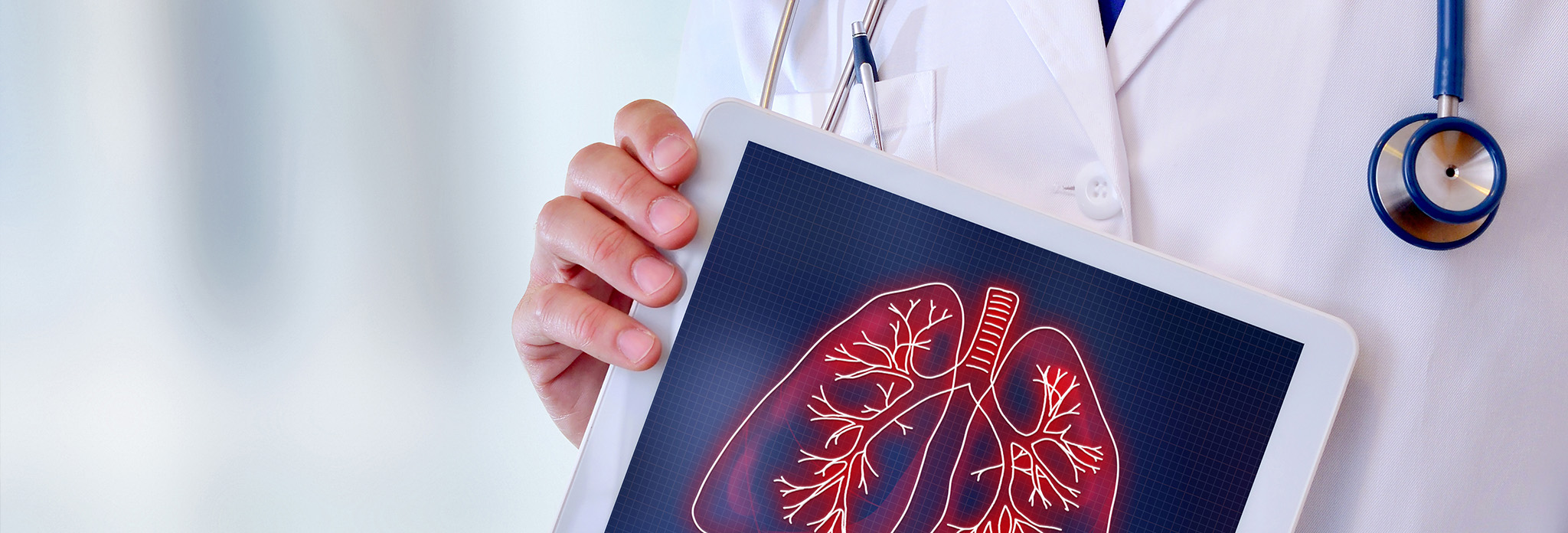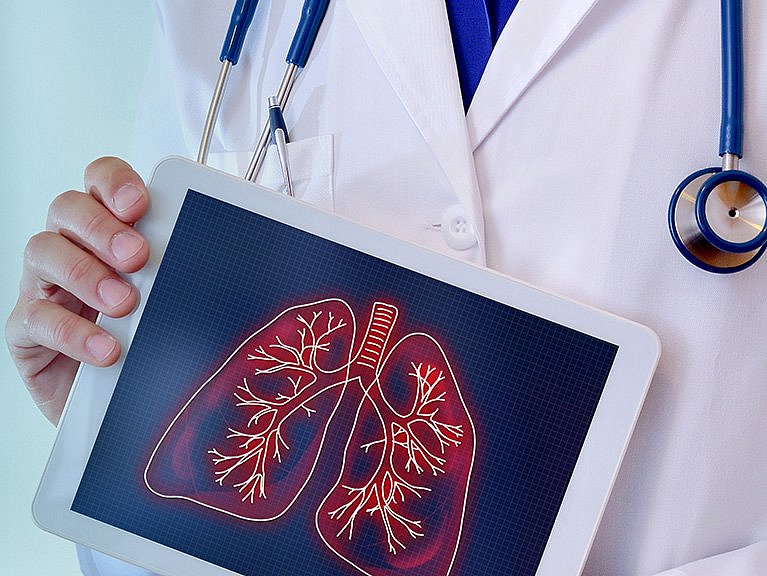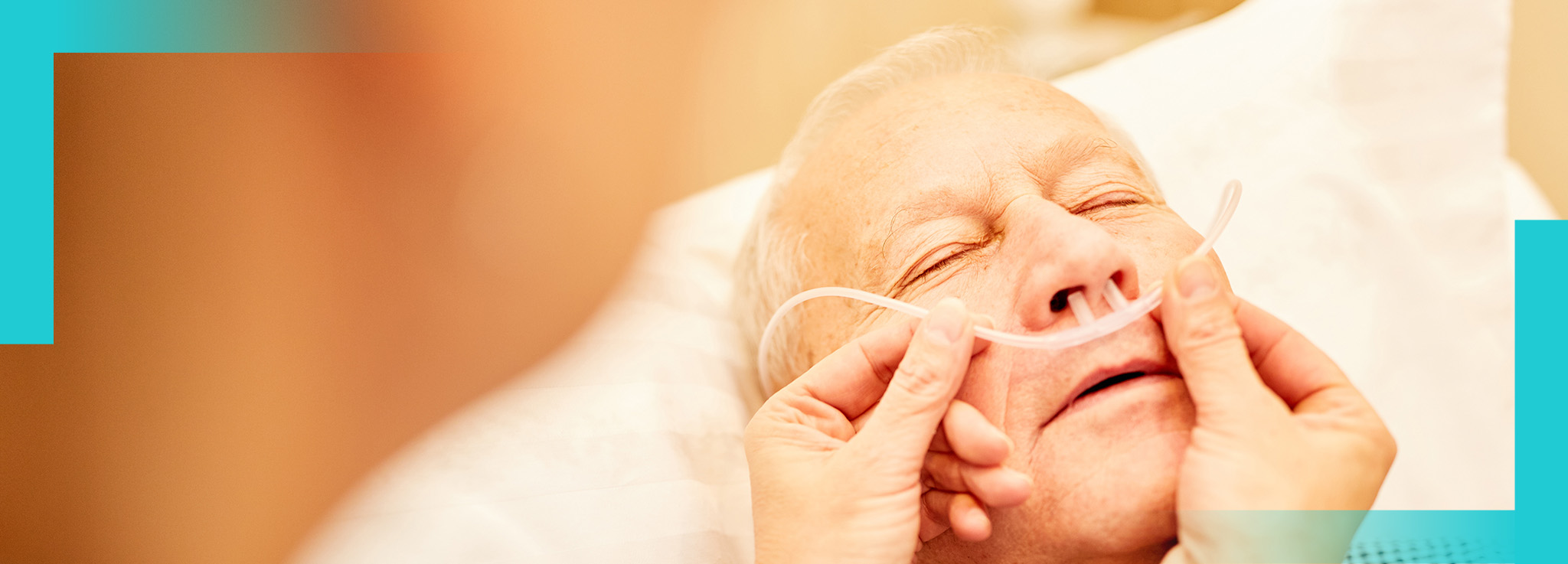Domestic ventilation
In recent years, out-of-hospital follow-up care of patients has increased significantly. Outpatient care has become more complex and demanding. Ventilation of patients in the home setting has also become more important. The ventilation equipment used in domestic ventilation today have been specially designed and developed for this purpose. Mechanical ventilation has developed into a very demanding therapeutic measure due to the multitude of modern respirator technologies and different ventilation options. This circumstance requires comprehensive expertise and a high level of competence from all those involved in ventilation therapy both in terms of indications, the principles of care and the technology and materials employed.
Ventilation forms and supplies are differentiated
Ventilation can be performed non-invasively via a mask or, alternatively, invasively via a tracheostoma with a tracheostomy tube. The respiratory cycle, i.e. the use of ventilation, may be required permanently or intermittently. Possible indications for mechanical ventilation include:
- Injuries involving the respiratory centre
- Neurological, for example amyotrophic lateral sclerosis or paraplegia
- Different lung diseases such as COPD or similar
For many patients from these or other disease areas, hospital discharge management must organise the transition from inpatient to outpatient follow-up care. The earliest possible cooperation between the discharging hospital, the aid supplier and the patient, or relatives and the follow-up care facility can significantly optimise the initiation and organisation of domestic mechanical ventilation.
What are the primary goals?
Outpatient home ventilation has the primary goal of either providing patients with assistance in a temporary phase of respiratory insufficiency to maintain the vital function of breathing, or to improve the patient's quality of life within the context of long-term ventilation. In addition, the intention is to enable a self-determined life and social participation in the home environment.
Our product range for deomestic ventilation
Individual care necessitates an extensive product portfolio. We cooperate with renowned manufacturers and collaboration partners and can offer products from the following specialties:
- Invasive ventilation via tracheal tubes
- Tracheal tube management
- Speech under ventilation
- Non-invasive ventilation/mask ventilation
- Secretion management
- Oxygen therapy
- Monitors and pulse oximeter
- Cough management
- Speech therapy
- Enteral nutrition
- Adult and child care
What needs to be considered?
Planning optimal ventilation requires the service provider to have extensive expertise in the different ventilation options and the technical details of various home ventilation devices. In the field of respiratory therapy, Fahl exclusively employs trained specialist staff, in particular specialist nurses for intensive care and anaesthesia, as well as specially trained medical-technical staff with many years of experience and expertise, for patient care.
Our objective is to accompany and comprehensively care for the patient right from the very beginning, i.e. starting in the emergency hospital and continuing into the patient's home. Therefore, our focus is on individual patient monitoring of the care situation. This gives us a comprehensive impression of the specific needs, as well as the opportunity for optimally planning the selection of the medical aids and equipment.
What is the procedure in concrete terms?
In consultation with the attending physicians and nursing staff, and after clarification of the necessary formalities, the required ventilator is delivered to the hospital before discharge to facilitate the quickest possible adaptation of the ventilator to the patient's respiratory situation. After successful adjustment of the device in the clinic and setting the discharge date, we prepare the further provision of aids in the care facility or in the home environment. There, all persons involved in daily patient care are instructed in detail with regard to the technical equipment and familiarised with its handling. On the day of discharge, our responsible representative in the field is also on site to answer any further questions if necessary. This creates the basis for safe handling in the area of tracheostoma care and technical devices.
Nothing stays as it is
Even after the initial introduction to the various aids, your distributor is available as a contact person at any time, so that the care can also be varied if changes are needed. Regular visits by appointment can be part of the FAHL representatives service offer to identify any problems in the provision of aids at an early stage, to determine the changed needs and to accommodate them if necessary. We complement the provision of ventilation therapy aids with a comprehensive range of services:
- Fast delivery of consumables and accessories
- Performing technical equipment maintenance, safety checks
- Repair service
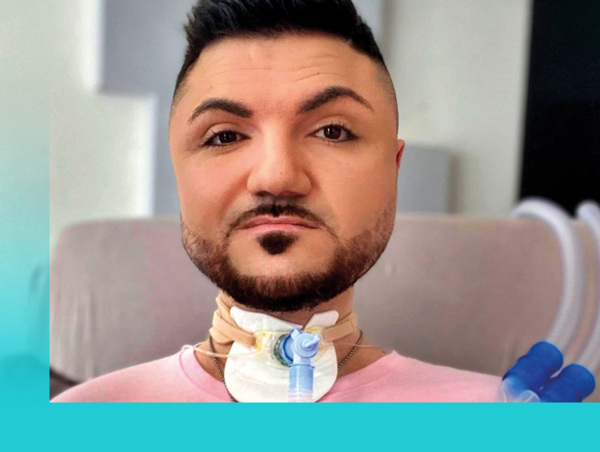
Noh Gourie
Noh has been suffering from Morbus Duchenne since his childhood. Duchenne is a neuromuscular disease. Unfortunately, this entails the gradual deterioration of the entire muscles in the body. In spite of a low life expectancy, Noh was able to happily celebrate his 31st birthday in December 2020. In a routine examination, the physicians found that the CO2 concentration in his body was too high.
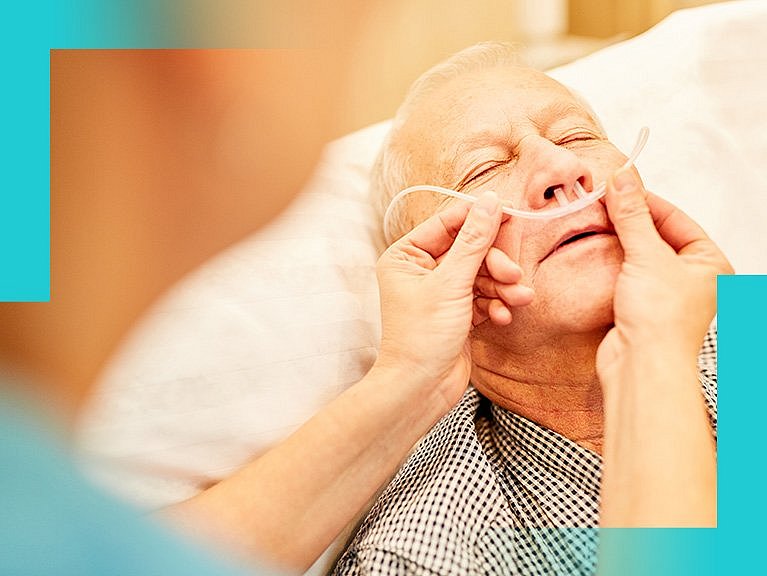
Oxygen therapy outside the hospital
The chemical element oxygen (O2) is absolutely essential for human life. A sufficient oxygen content in the body is a prerequisite for all necessary metabolic processes and ultimately ensures our survival. Specific diseases with reduced oxygen uptake either lead directly to life-threatening situations or in the long term. An external supply of oxygen is then absolutely necessary.
The aim of continuous O2 application in the context of such diseases is to improve the quality of life, to increase the physical performance of those affected and to increase their life expectancy. The amount of oxygen is based on the patient's individual needs and is determined via a physician's prescription, as medical oxygen is approved as a medicine and considered to be a prescription drug.
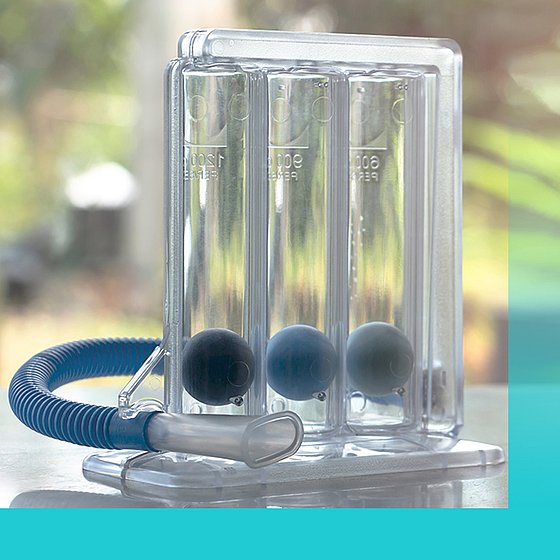
Special devices for oxygen therapy, for example O2 concentrators or liquid oxygen systems, are offered by different manufacturers in varying designs and models.
Here, too, a solution-oriented assessment of the care situation and the specific patient needs form the basis for professional planning and long-term provision of aids by our qualified specialist staff.
Long-term oxygen therapy is indicated for conditions which pose a risk of oxygen deficiency, e.g.
- Respiratory and lung diseases
- Cardiac diseases
- Breathing disorders
Service offers such as personal on-site visits, fast delivery times, repair and maintenance service as well as a 24-hour technical emergency service complete our range of services and products as a supplier of medical aids in the care sector of ventilation and oxygen therapy.
